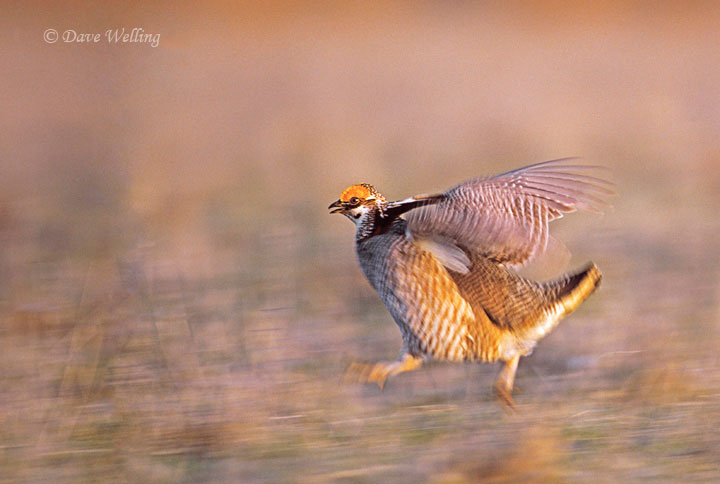Wild animal subjects often offer the best opportunities for dynamic, interesting images around sunrise or sunset when the light level is low. This low-angled light can be stunning but it does present a challenge. What settings do you use to capture sharp images under these low light conditions?
It becomes even more of a challenge if the animals are active. Stop for a second and think a little outside the box. If the animal is running or jumping in somewhat of a predictable manner, why not use a technique called blur-panning to emphasize the action yet keep the key parts of your image in sharp focus?
Blur-panning requires a few adjustments to your normal shooting technique. First of all, in low light conditions you should be using a tripod to help get those sharp images. But instead of locking your ball head and camera down tight, loosen the controls so you can swing your camera/lens in a horizontal direction. Then, focus on the eye of your subject (always the key element to keep sharp in a wildlife image) and follow your subject as it runs across your field of view. If the animal is jumping up and down, switch your tripod controls to allow vertical movement of your equipment.
Look at the image below of the male lesser prairie chicken. These highly endangered birds arrive on their leks (open areas where the males display for females and defend territories) long before sunrise and begin calling and displaying as the sun rises – very low light conditions. This male was very aggressive, running to chase away other males that intruded into his territory. I was able to estimate where he would run to and set my camera shutter speed on 1/8 second so I could capture a flowing, blurred background to give the image a feeling of motion.
I made sure I focused on the eye of the making it the only sharply focused element of the image. The low light had a beautiful warm tone, typical of the low-angled sunrise light. The low light also helped with the camera settings for this image in that I could use a slow shutter speed and also use a medium setting f-stop to help further blur the background (even at f11 my 500mm lens has a fairly shallow depth of field). All I had to do then was wait for him to take off after another bird and “go with the flow.”
Try it the next time you are faced with conditions like this. You will create some really strong images.
About the author: Dave Welling is a full time professional photographer specializing in wildlife, landscape and nature with over 75,000 6×7, 6×4.5, and 35mm film and digital images. He has been capturing evocative images of the natural world for over 25 years, producing the highest quality images for publication. His images often capture unique behavioral characteristics of wildlife or special lighting or weather conditions of landscapes. You can see more of his work at www.strikingnatureimagesbydavewelling.com.
Have something to add to the story? Leave a comment or email editor@outdoorphotographyguide.com.

Share tips, start a discussion or ask other students a question. If you have a question for the instructor, please click here.
Already a member? Sign in
No Responses to “Blur-Panning for Action Photos”